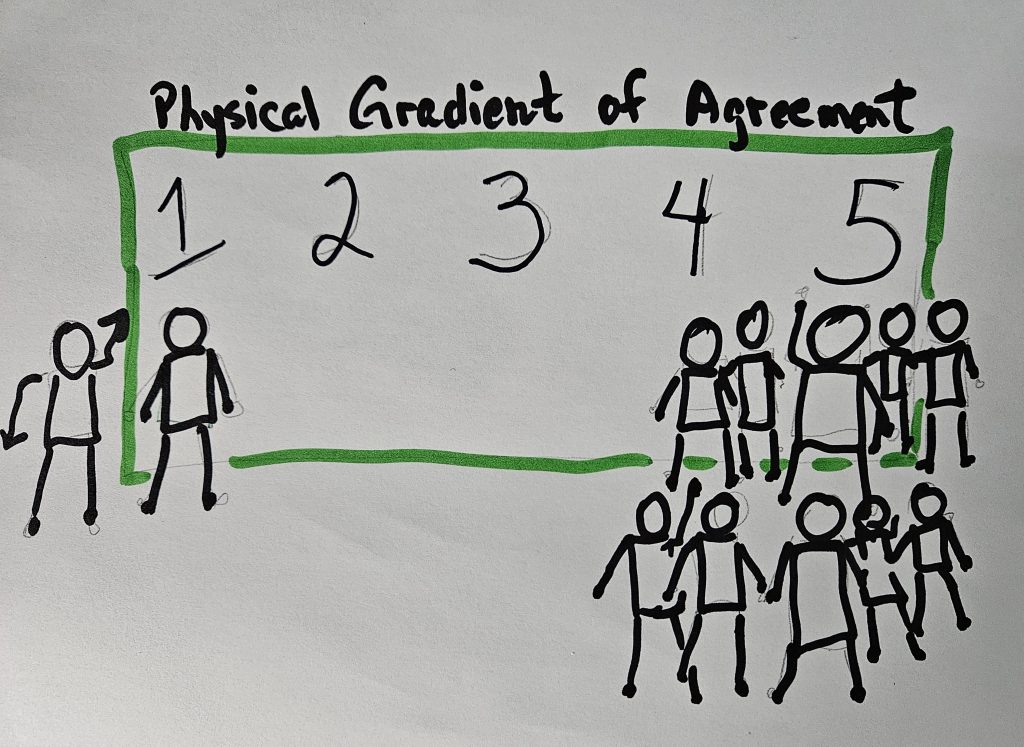I took a risk and placed participants “on the spot.” Here’s my story in Post #5 in my short series of #facilitationmoments.
During the first part of a 1½ day workshop involving two organizations considering amalgamation, I noticed that two individuals out of the 20 participants were dominating discussions, expressing their opinions forcefully, and negating the ideas of others. I used pair and small group discussions to build trust and explore the amalgamation concept. Each participant, through various techniques, gave their ideas and opinions. Despite most participants expressing differing opinions, these two individuals continued to strongly state their views, causing others to become quieter over time.
On the evening of day 1, I reflected on the situation, sorted through my observations and emotions, and frankly, agonized about what action to take. Then, in a facilitation moment, I trusted my intuition and chose a risky approach.
At the start of the second day, I introduced a “Physical Gradient of Agreement” activity. On the wall, I displayed a large banner with the numbers 1 to 5 and asked participants to privately answer the following question with 1 meaning “not at all “and 5 meaning “a great extent.”
“To what degree do you believe the two organizations would benefit from amalgamating?”
I then asked the group to go all at once to the banner and on a count of 3 stand by the number that represented their opinion.

The outcome was revealing. The two dominant individuals stood near “1,” indicating minimal support for amalgamation, while others clustered around “4” and “5,” showing greater support.
This visual representation led to a discussion in which the two individuals acknowledged that they were the outliers in the discussions and that the others had opinions that needed to be respected and considered.
With this highly visible perspective shift, we proceeded to explore and assess amalgamation options and prioritize the most promising ones. Everyone engaged more actively, and the session concluded with positive feedback from all participants.
When deciding whether I would use the activity, I struggled with the risk of putting the two participants “on the spot.” I rarely do! I balanced the safety of the two individuals with the need to help the other participants express their opinions. I thought that the physical demonstration was the most compelling way to have the two individuals realize what the others were saying. And the others gained courage when they saw how strong the desire was for the amalgamation.
The success of a session can hinge on one moment of facilitation. A facilitator recognizes these moments and responds appropriately for the benefit of the group.
What calculated risks have you taken while facilitating or training?
